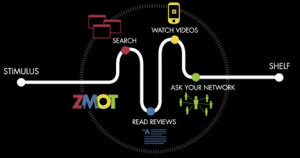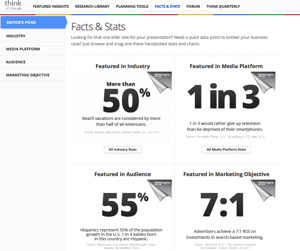Agile Creativity a Boon to People-Focused Content
Several months ago at SES NYC, I had the opportunity to attend a session led by Jon Ball of Page One Power (@linkbuildingjon) that focused heavily on the how-tos of developing a successful link-building campaign.
 One concept in particular, on which Jon provided his own, unique spin, resonated because it mirrored the underlying principal of EVG’s mission statement: To ensure that our clients win their Zero Moment of Truth by providing the best content marketing worldwide supported by outstanding customer service.
One concept in particular, on which Jon provided his own, unique spin, resonated because it mirrored the underlying principal of EVG’s mission statement: To ensure that our clients win their Zero Moment of Truth by providing the best content marketing worldwide supported by outstanding customer service.
Ball argues that, at its core, every successful link-building campaign must put customers’ (read as: people’s) needs before those of the brand. Ball refers to this guiding principal as FTBOM (For the Betterment of Mankind), and my colleague, Harvin, posted an interesting perspective on this type of community-focused content strategy just a few weeks ago.
The people-focused concept isn’t a new one to EVG’s team of writers, editors and PMs, as we’ve long been supporters of communicating with people (not robots) and pushing our clients in the direction of truly user-focused content strategies that help them win ZMOT—their cherished Zero Moment of Truth—by starting with some basic questions: Who are our customers, and what do they need?
Google Insights Gives Marketers Agile Creativity
You hear it bounced around at every content industry conference these days: In today’s user-centric digital world, it’s not so much about The Brand as it is about the PEOPLE who use the brand. And then we all sit around with self-satisfying exhalations because it’s such a refreshing revelation to an industry that not so long ago was heavily beholden to meta data length and tagging best practices (for search, a.k.a. robot, visibility) that it seemed to forget content and for whom that content was created.
While the most recent reports that SEO is dead are trendy and, as my colleague Kathleen Gossman notes in a recent post, a tad “hyperbolic,” the whole user-focused, community-driven, FTBOM-ness of “real content” sometimes (and often does) get pushed aside when content marketers are making their case before numbers-driven executives keen on high page views, low bounce rates, and stellar page rankings.
 Enter Google Insights, and the Agile Creativity playbook. As AdAge’s Rupal Parekh observed four days ago: “Among the things the “Agile Creativity” playbook recommends to agencies is a revamp of the way account and creative teams are structured and operate, a focus on rethinking how agency creative briefs are written, and embracing tight deadlines (with a suggestion that companies should always operate in “hackathon mode”).
Enter Google Insights, and the Agile Creativity playbook. As AdAge’s Rupal Parekh observed four days ago: “Among the things the “Agile Creativity” playbook recommends to agencies is a revamp of the way account and creative teams are structured and operate, a focus on rethinking how agency creative briefs are written, and embracing tight deadlines (with a suggestion that companies should always operate in “hackathon mode”).
Though intended for those holding sway in adworld (and, admittedly, a little self-promoting of Google’s own products), the playbook provides a litany of industry-tested best practices, methods for merging (and capitalizing on the merger of) creativity and technology, and enough industry-relevant research and terrific statistical data to make your next PowerPoint scream “promote me.” For example, in the spirit of speed and collaboration, the Agile Creativity team offers 7 Agility Tips for agencies to follow that includes action items like “Get team members in the same space for the duration of a project by breaking down walls between departments or creating a “virtual war-room” and “Schedule a half-day workshop that couples speedy idea generation with real-time testing of market potential.”
 The best part for purveyors of quality content? All of the user/usage statistical reports (segmented by country) and demographics studies emphasize people, not brands, making it easy to pull together compelling data to support pitches that privilege the virtues of quality, user-focused content strategy over one that’s sole, sad raison d’être is higher page views and SERP rankings.
The best part for purveyors of quality content? All of the user/usage statistical reports (segmented by country) and demographics studies emphasize people, not brands, making it easy to pull together compelling data to support pitches that privilege the virtues of quality, user-focused content strategy over one that’s sole, sad raison d’être is higher page views and SERP rankings.
Think Google’s not on the “people-centric” path? Just check out the “People Issue” of Think Quarterly, published last fall. It clearly shows they are, and as the development of Knowledge Graph further indicates, have been pondering people-focused search semantics long before it was cool to do so.
Joseph K. Hall – VP, Content Marketing



